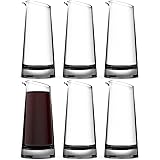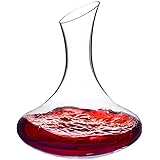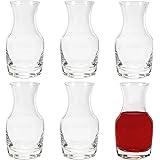Understanding the fundamental distinctions between different types of wine can significantly enhance your appreciation for this ancient beverage. As the video above briefly explains, the core difference between red wine and white wine lies in a crucial step of the winemaking process.
This simple concept, while straightforward, opens up a world of variation in color, aroma, flavor, and texture. Let’s delve deeper into what makes red wine red and white wine white, exploring the nuances that contribute to their unique characteristics.
Understanding the Core Difference: Red Wine vs. White Wine
The primary distinction, as highlighted, revolves around the fermentation process and the role of grape skins. Red wine is specifically crafted by fermenting crushed grapes alongside their skins and seeds.
It is these skins that are responsible for imparting the wine’s deep color, as they contain the natural pigments. Without the skins, you wouldn’t get that iconic ruby or garnet hue.
How Red Wine Gets Its Rich Color and Flavor
When making red wine, winemakers allow the grape juice, skins, and seeds to ferment together. This skin contact is vital not only for color but also for extracting other compounds.
Beyond color, the skins and seeds contribute tannins, which are phenolic compounds that give red wine its structure, complexity, and often a slightly bitter or astringent sensation. Tannins are crucial for red wine’s ability to age gracefully, allowing it to develop more intricate flavors over time.
Common red wine grapes, such as Cabernet Sauvignon, Merlot, Pinot Noir, and Zinfandel, all feature dark-colored skins. These dark pigments are extracted during fermentation, resulting in the characteristic red color we recognize.
The Clarity and Crispness of White Wine
In contrast, white wine is typically produced by fermenting only the clear grape juice, with the skins and seeds removed before fermentation begins. This process ensures that the wine remains clear and light in color, as there are no pigments to be extracted.
Interestingly, white wine can actually be made from almost any color of grape, including dark-skinned varieties, as long as the skins are separated immediately after crushing. For example, some Champagne is made from Pinot Noir grapes, which are red, but the juice is pressed off quickly to prevent color extraction.
The absence of skin contact during fermentation means white wines generally have fewer tannins compared to red wines. This often contributes to a lighter body and a crisper, more refreshing taste profile.
Popular white wine grapes include Chardonnay, Sauvignon Blanc, Pinot Grigio, and Riesling. These grapes are often chosen for their natural acidity and aromatic qualities.
The Role of Grape Skins and Seeds in Winemaking
The interaction between grape juice and its solid components—skins, seeds, and sometimes stems—is a cornerstone of winemaking. This interaction dictates much more than just color; it shapes the very essence of the wine.
In red winemaking, the longer the skins and seeds remain in contact with the fermenting juice, the more color, tannins, and flavor compounds are extracted. This is why some red wines are intensely colored and robust, while others are lighter and more delicate.
For white wines, the quick separation of skins minimizes these extractions. This allows the fresh, fruity, and floral aromas inherent in the grape juice itself to shine through.
Beyond Color: Exploring Taste Profiles and Body
The distinction between red and white wine goes far beyond what meets the eye. The different winemaking processes lead to vastly diverse sensory experiences, influencing everything from aroma to mouthfeel.
Distinguishing Red Wine Flavors and Body
Red wines are often characterized by a broader spectrum of flavors, ranging from red berries like cherry and raspberry to darker fruits like blackcurrant and plum. You might also detect notes of spice, earth, tobacco, or leather, especially in aged examples.
The “body” of a red wine refers to its weight and fullness on the palate. Full-bodied red wines, like a Cabernet Sauvignon, feel rich and substantial, often due to higher alcohol content and significant tannin structure. Medium-bodied reds, such as a Merlot, offer a smoother texture, while light-bodied options like Pinot Noir can be delicate and elegant.
Exploring White Wine Aromas and Characteristics
White wines tend to showcase brighter, more vibrant flavor profiles. Common descriptors include citrus fruits (lemon, lime, grapefruit), orchard fruits (apple, pear), tropical fruits (pineapple, mango), and sometimes floral or mineral notes.
Acidity is a key component of white wine, contributing to its refreshing quality and ability to cleanse the palate. High acidity can make a white wine feel crisp and lively.
White wines also vary in body, from light-bodied and zesty (like a Sauvignon Blanc or Pinot Grigio) to richer and more viscous (like an oaked Chardonnay). The winemaking techniques, such as barrel fermentation or aging on lees, can significantly impact a white wine’s texture and complexity.
Pairing Red and White Wine with Food
Understanding the fundamental **difference between red wine and white wine** provides a useful framework for food pairing. While rules are meant to be broken, these general guidelines can help enhance your dining experience.
Red wines, with their tannins and often bolder flavors, typically pair well with richer, heavier dishes. Think red meats, hearty pasta dishes, stews, and aged cheeses. The tannins in red wine can cut through the fat of a steak, creating a harmonious balance.
White wines, being generally lighter and more acidic, are excellent companions for poultry, fish, seafood, salads, and lighter vegetable dishes. A crisp white wine can complement the delicate flavors of white fish without overpowering them, or provide a refreshing contrast to creamy sauces.
Ultimately, personal preference is paramount. Don’t be afraid to experiment and discover your own favorite combinations, regardless of conventional wisdom. The journey of discovering different types of wine and their perfect pairings is part of the fun.
Whether you prefer the robust complexity of red wine or the crisp elegance of white wine, knowing the basic distinctions enriches every sip. The fundamental difference between red wine and white wine, rooted in their unique winemaking processes, is just the beginning of a fascinating world to explore.







